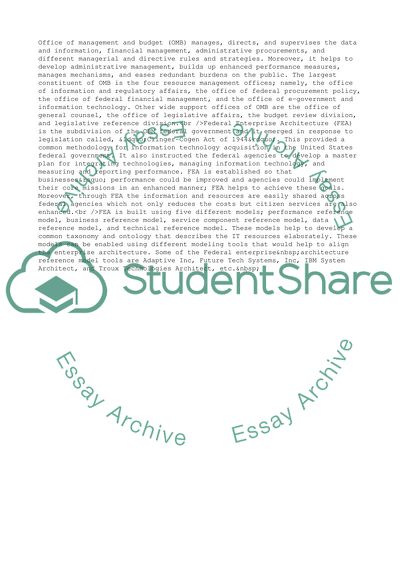Cite this document
(Functioning of Office of Management and Budget and Federal Enterprise Architecture Essay Example | Topics and Well Written Essays - 1500 words, n.d.)
Functioning of Office of Management and Budget and Federal Enterprise Architecture Essay Example | Topics and Well Written Essays - 1500 words. https://studentshare.org/management/1563002-information-technology-e-gov-paper
Functioning of Office of Management and Budget and Federal Enterprise Architecture Essay Example | Topics and Well Written Essays - 1500 words. https://studentshare.org/management/1563002-information-technology-e-gov-paper
(Functioning of Office of Management and Budget and Federal Enterprise Architecture Essay Example | Topics and Well Written Essays - 1500 Words)
Functioning of Office of Management and Budget and Federal Enterprise Architecture Essay Example | Topics and Well Written Essays - 1500 Words. https://studentshare.org/management/1563002-information-technology-e-gov-paper.
Functioning of Office of Management and Budget and Federal Enterprise Architecture Essay Example | Topics and Well Written Essays - 1500 Words. https://studentshare.org/management/1563002-information-technology-e-gov-paper.
“Functioning of Office of Management and Budget and Federal Enterprise Architecture Essay Example | Topics and Well Written Essays - 1500 Words”. https://studentshare.org/management/1563002-information-technology-e-gov-paper.


